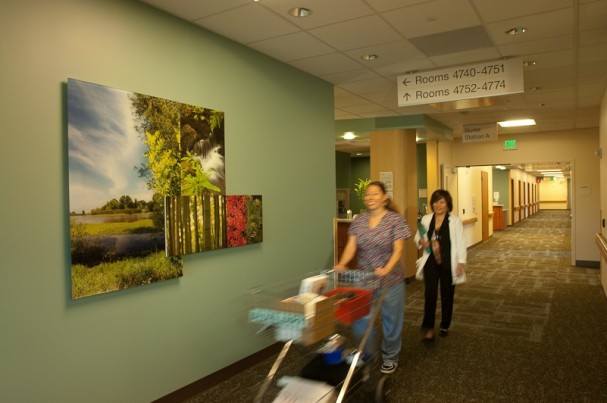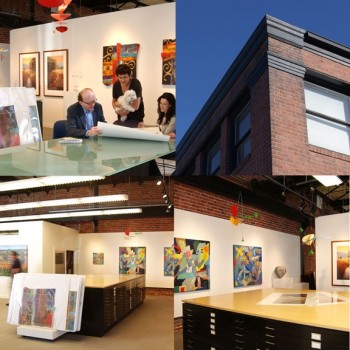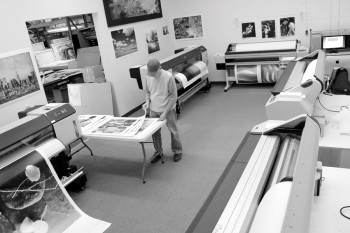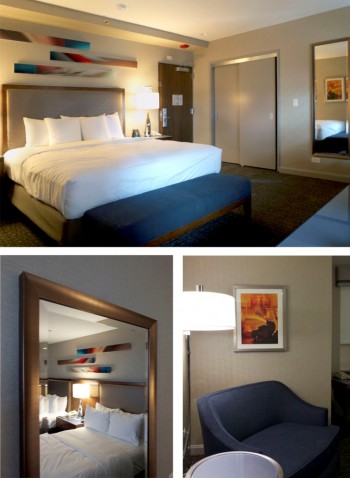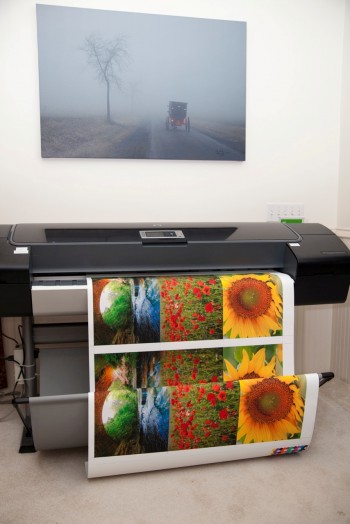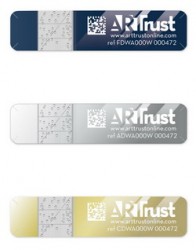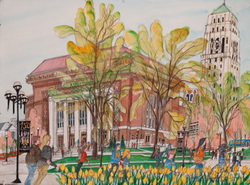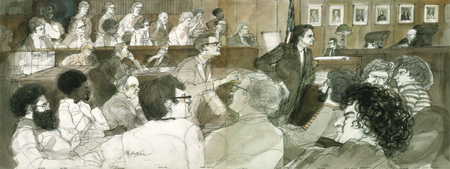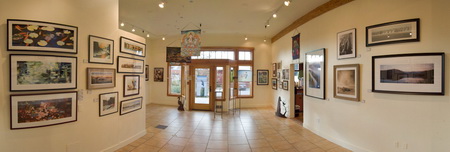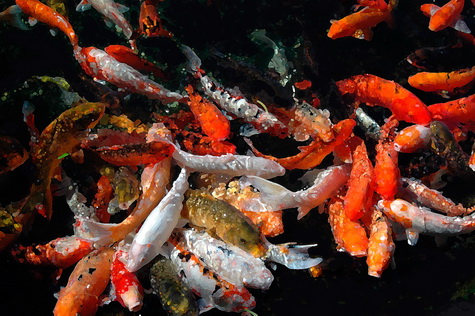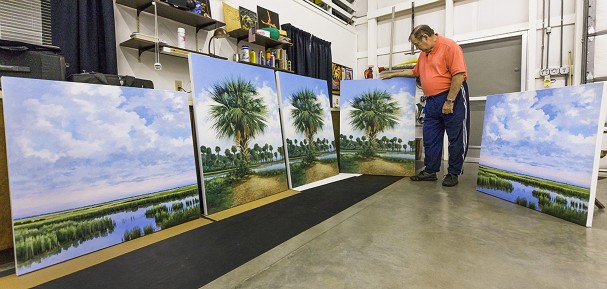
It takes a master to reproduce a master’s art. Bill Barley, owner of Bill Barley & Associates (aka Studio BB&A), Lexington, S.C., recently had the unique privilege of printing giclees for one of South Carolina’s top veteran artists, Jim Harrison.
 Harrison’s work typically depicts South Carolina’s natural beauty, especially its grand coastal areas. Harrison began his career as a sign painter in the days long before the advent of any vinyl-cutting or printing technology, then turned his talent to fine-art painting.
Harrison’s work typically depicts South Carolina’s natural beauty, especially its grand coastal areas. Harrison began his career as a sign painter in the days long before the advent of any vinyl-cutting or printing technology, then turned his talent to fine-art painting.
Now in his late 70s, Harrison has dived into the digital world with Bill Barley.
“You might call him the artist emeritus of South Carolina,” says Barley. “He’s doing a series of coastal scenes and I’ve been doing a tremendous amount of canvas printing for him. He’s a traditional artist, who for most of his career has sold only litho prints. Now he’s jumped into giclee printing big time.”
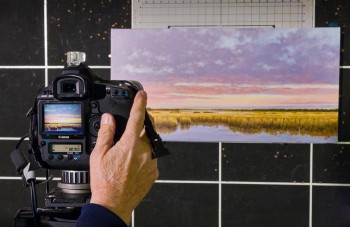
Barley’s print process using an Epson Stylus Pro 9890 and the ImagePrint RIP fully and faithfully reproduces Harrison’s masterpieces.
“I’m using LexJet Instant Dry Satin Canvas. It looks like real artist canvas and the artists I work with love it. That canvas is worth every penny,” says Barley. “Jim Harrison is exacting in the landscapes he creates, and demands the same of me for his reproductions.”
Barley adds that the gallery wraps are custom built in collaboration with his framer since artists like Harrison don’t paint at standard sizes and prefer not to crop their work. Most of the gallery wraps shown here are 1 1/2″ thick.

